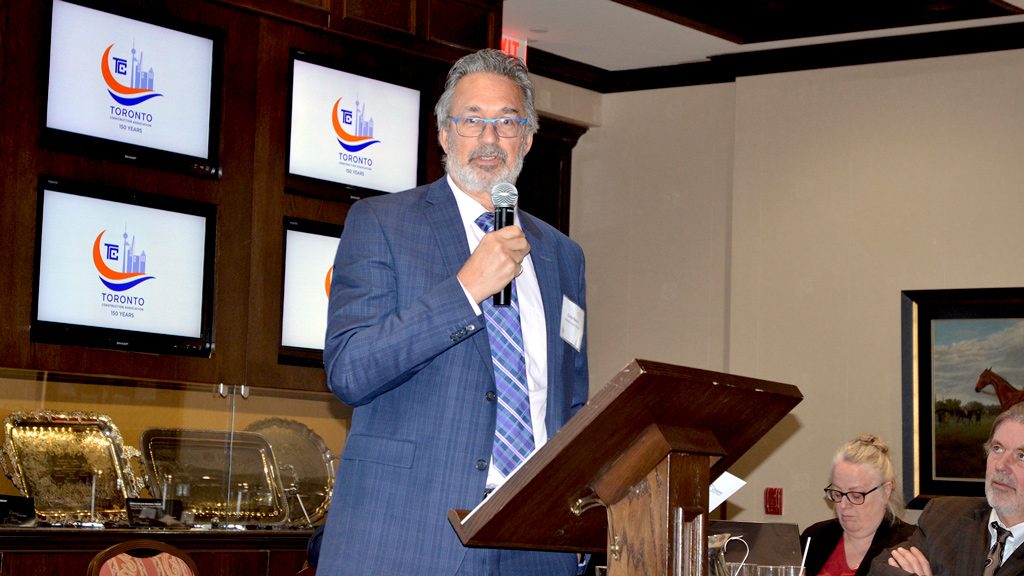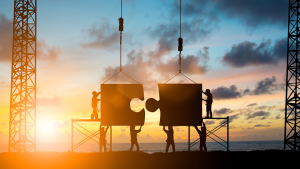Since being elected less than a year ago, Ontario’s Conservative government is aiming to make it easier to deliver infrastructure projects across the province, says the president of project delivery at Infrastructure Ontario (IO).
“This government has taken the handcuffs off our delivery model and really allows us to do the right project the right way, so that’s really a new way of doing things from that perspective,” Chris Gauer told the audience at the Toronto Construction Association’s Annual General Meeting and Best of the Best Awards held Feb. 21 in Etobicoke, Ont.
“I run the P3 (public-private partnerships) team but we just got the direct delivery team put on the team too, so now this new government will actually allow us to do everything from soup to nuts. We are allowed to do small projects, we’re allowed to do the big ones and we’re allowed to look at any kind of delivery model.”
While governments have been committing to infrastructure at all levels, there are questions about the pipeline.
“It’s causing the industry some concern but this is normal in a transition between different governments,” explained Gauer.
“We put a lot of work out last year, but now we are in the process of trying to get the work out the door going forward. Certainly, a new government always pauses to reflect on what the last government did and we do see good signs of things coming back out in the short term after the budget. All the jobs that we had in our pipeline they asked the question should this go ahead and they made good business decisions based on that within cabinet and government.”
There is more work coming especially in health and transit, he said, stressing the importance of developing apprentices and workers for the industry.
“It’s really important because governments are still spending money and infrastructure is cool again, there is a time when it wasn’t,” said Gauer. “Through the ‘80s and early ‘90s I think a lot of us were sucking wind.
“The one thing I can say from my vantage point right now, even though we have a Conservative government and they are watching their pennies, they are also willing to invest in infrastructure.”
IO is a Crown agency that was developed in 2005 and has worked on 121 projects, most over $100 million, including health care facilities, courthouses and jails, transportation and transit.
Currently, 66 projects have been completed, 25 are under construction, 18 are in the pipeline in procurement and another dozen or so are in the gestation period, said Gauer.
“We are really hopeful that our pipeline of transit going forward will actually bring more work for the industry in Toronto,” he noted.
He admits IO’s relationship with Metrolinx on transit projects has been a bit “rocky” but the both sides are working on it.
“We’re really working with them to turn that ship around and get clear governance and decision points because if we come out messy, the job is going to be messy. You’ve got to know what you’re building, you’ve got to know the scope, you can’t change your mind,” said Gauer, adding recently the Ontario General Contractors Association and Metrolinx came to the table to find solutions.
“We’re working on turning the corner on a lot of those things to get better results of our contracts because we’re not really up to par from our perspective either on some of those jobs. It’s really important to get that right and getting proper controls and processes on our side so you guys can perform on the construction side.”
Transit is the major focus, Gauer noted, with the GO Regional Express Rail expansion being the big one coming down the pipe.
“Those who have been bidding the work have seen about a dozen early works contracts through us but there are many more smaller projects that are being done through direct delivery or traditional delivery through Metrolinx itself,” said Gauer.
“The big one is really the expansion of the electrification. It’s going to be a new type of contract. In the past we said here is the scope, go build it and give us your best price. On this one we’re saying we want you to operate a railway for 30 years, this is what we think you need to build to make it happen.
“It’s going to be big, but its going to be really focused on getting it done smart, fast and allowing for scalability.”











Recent Comments
comments for this post are closed